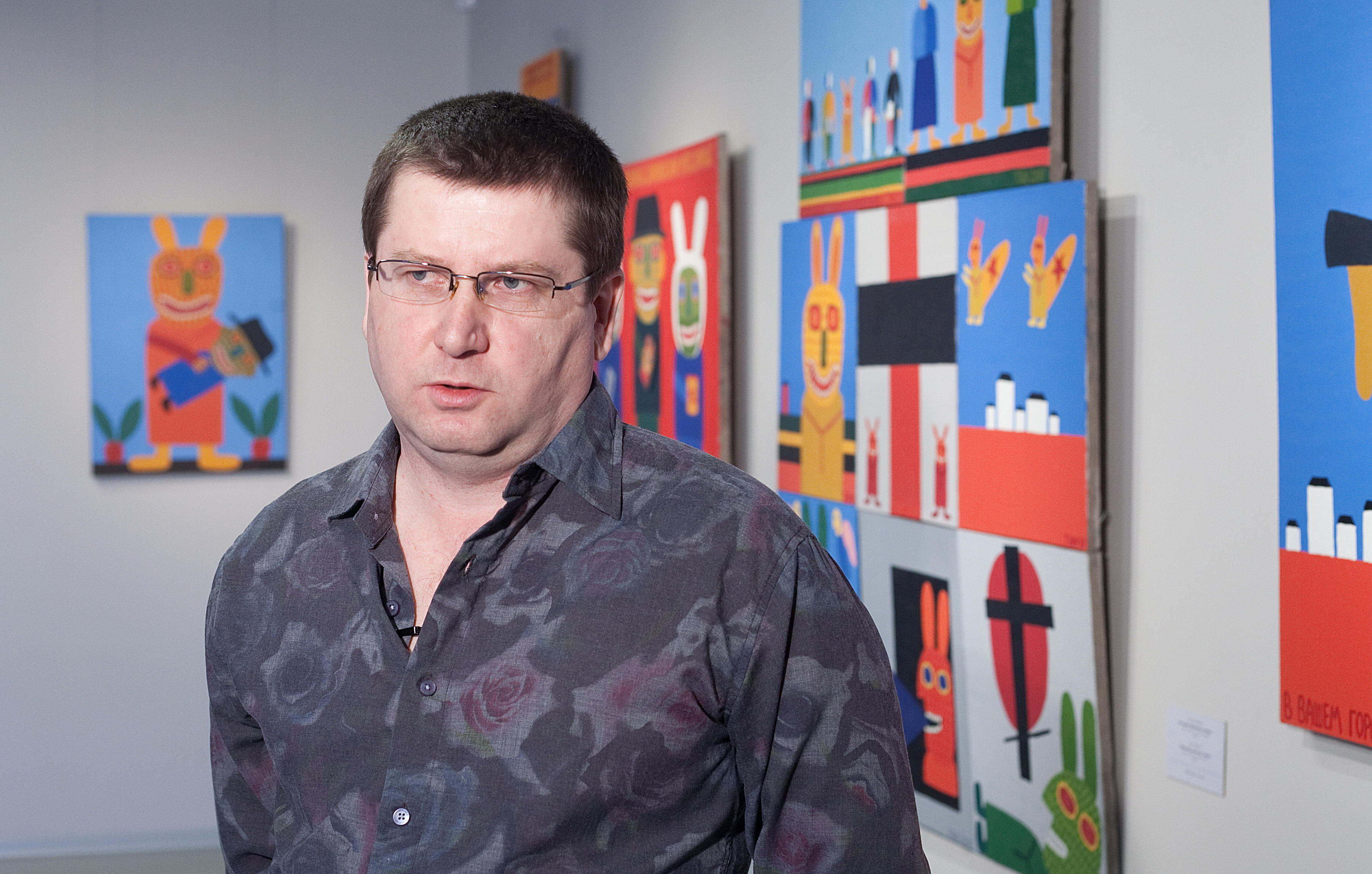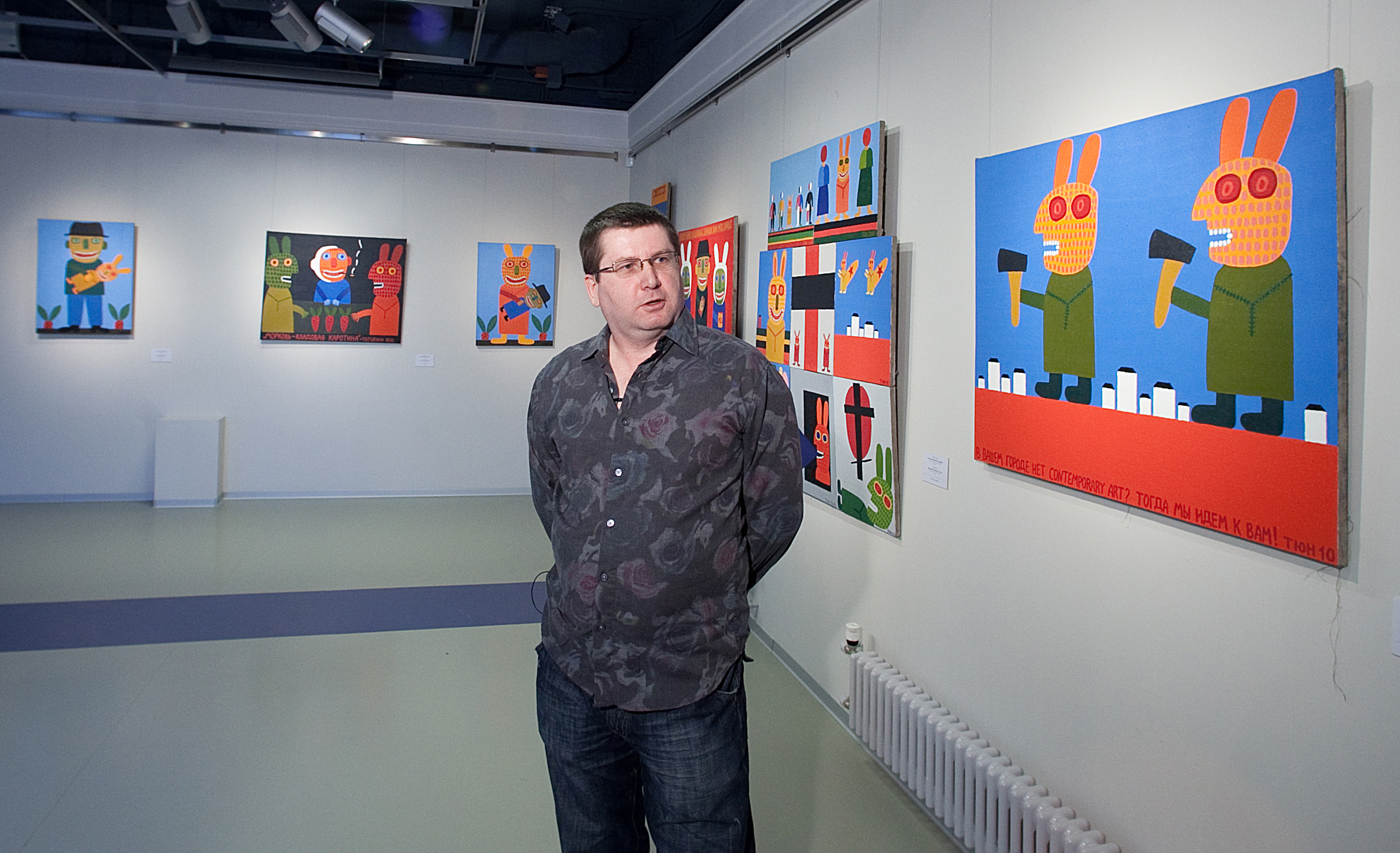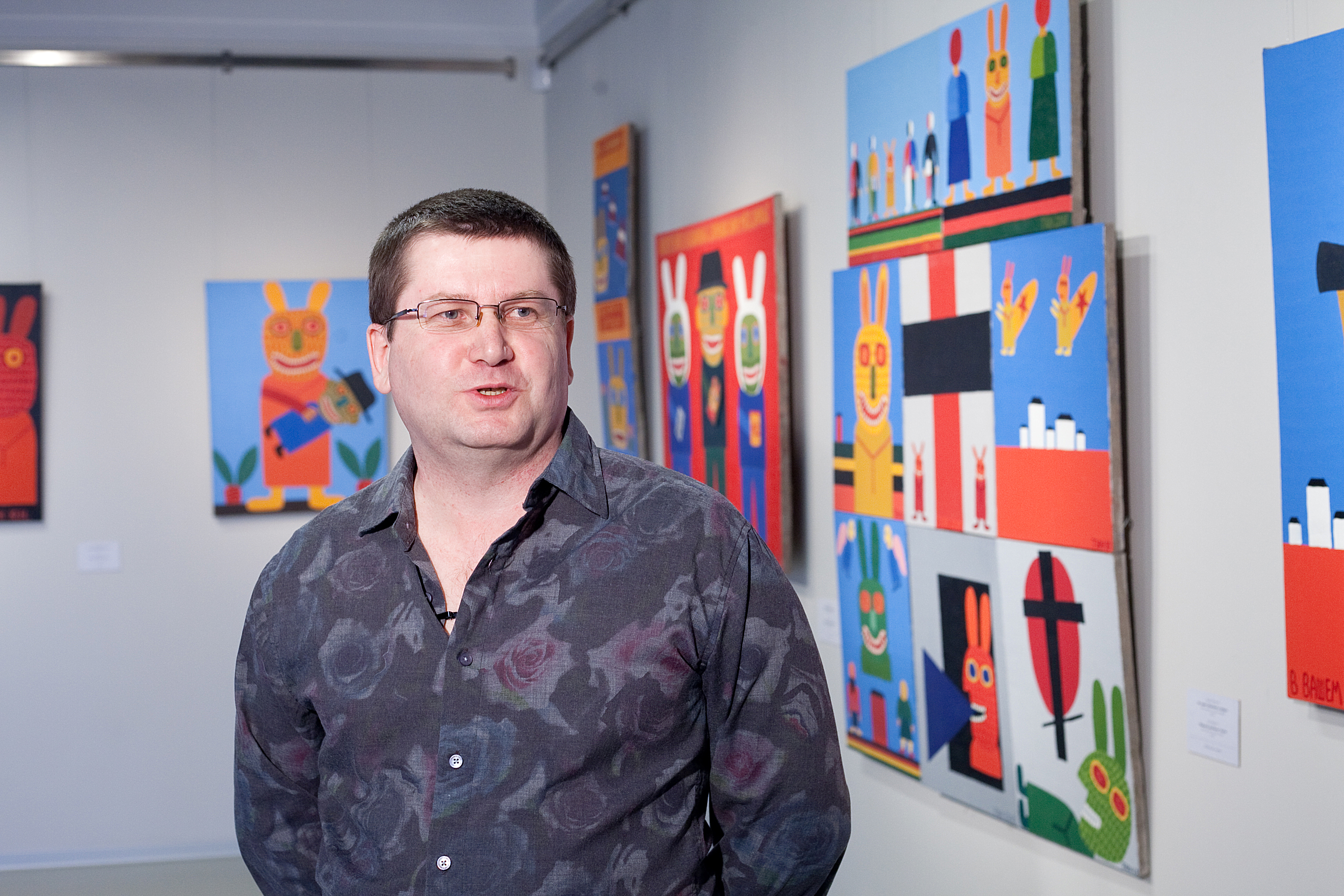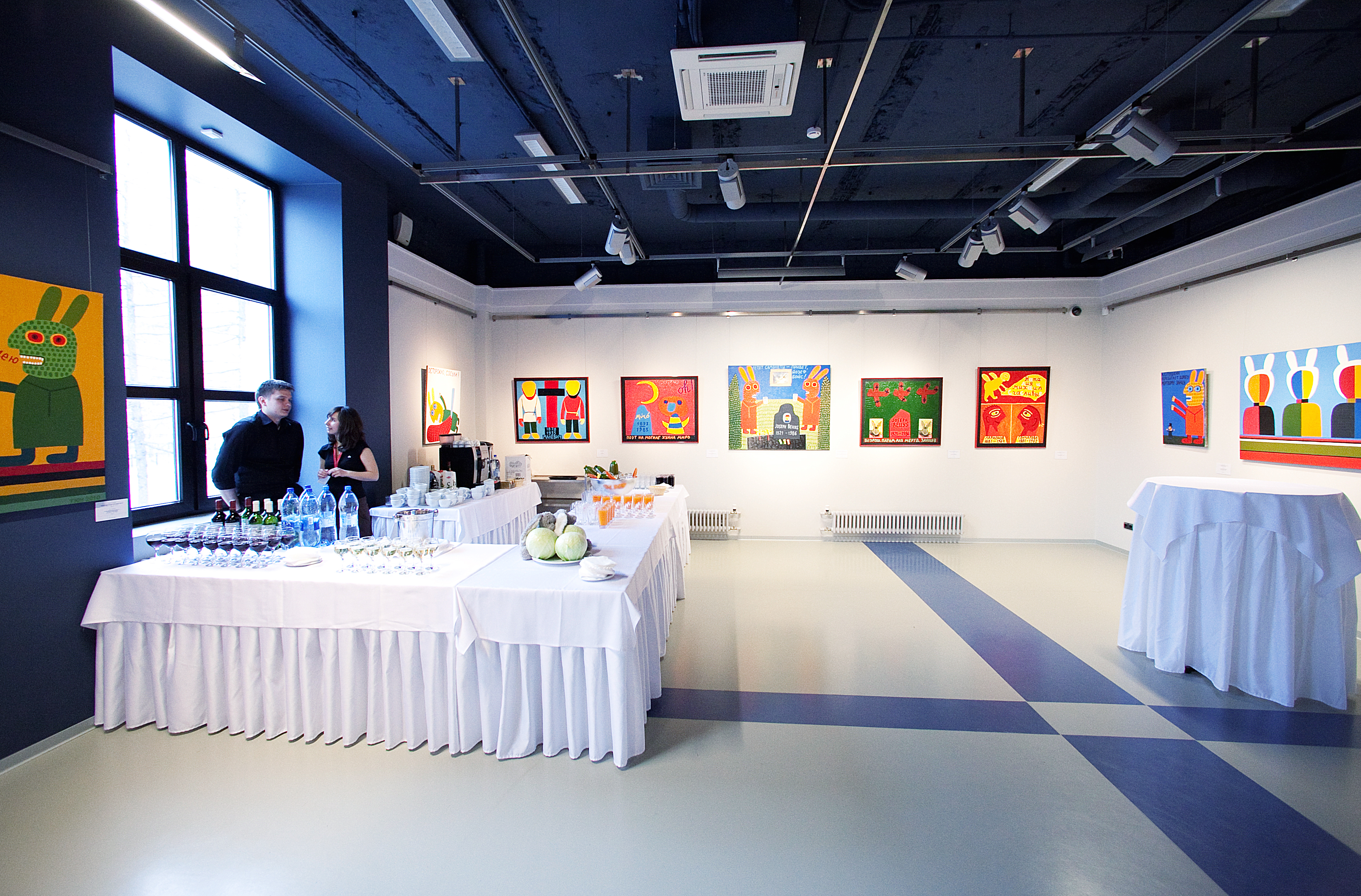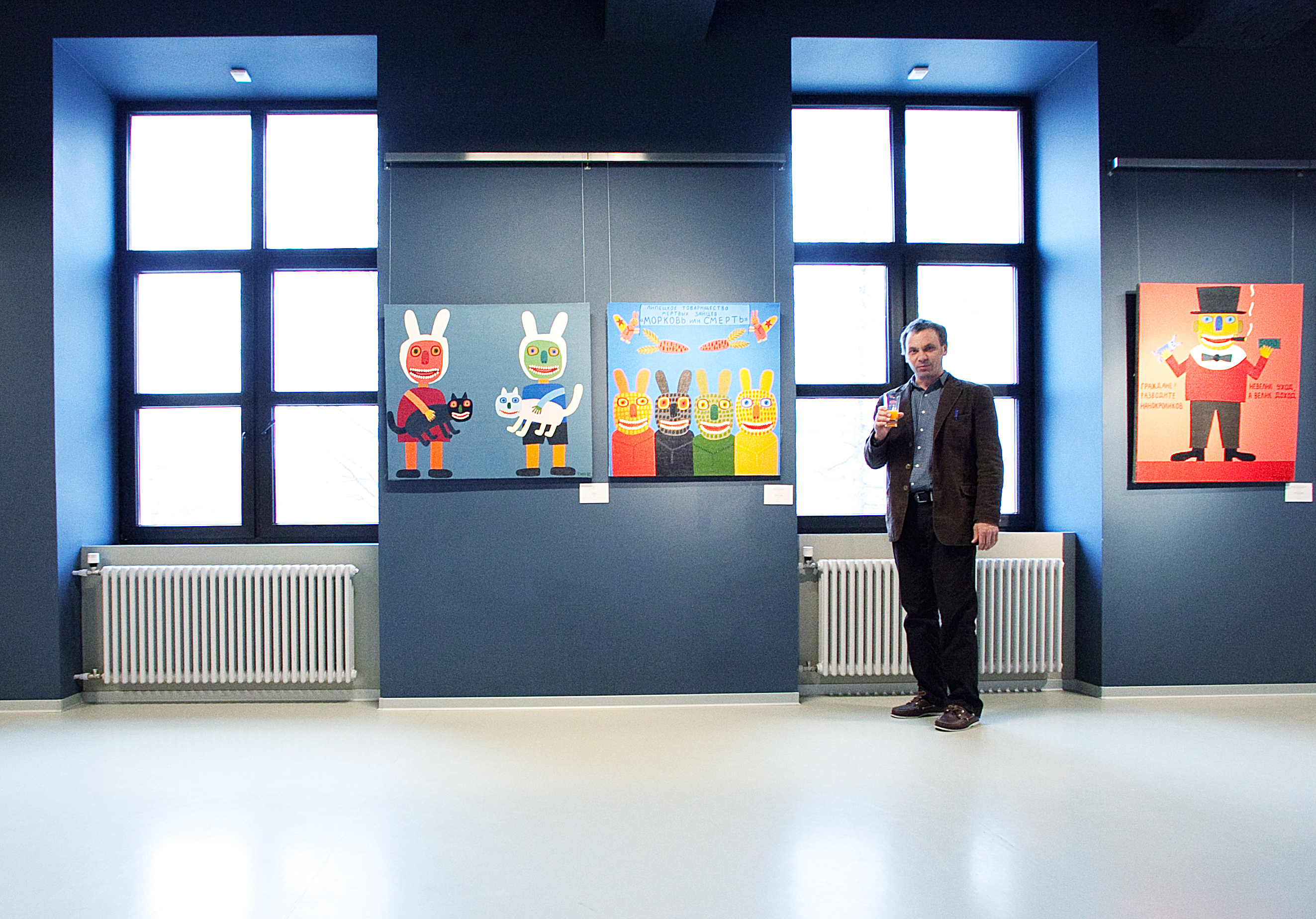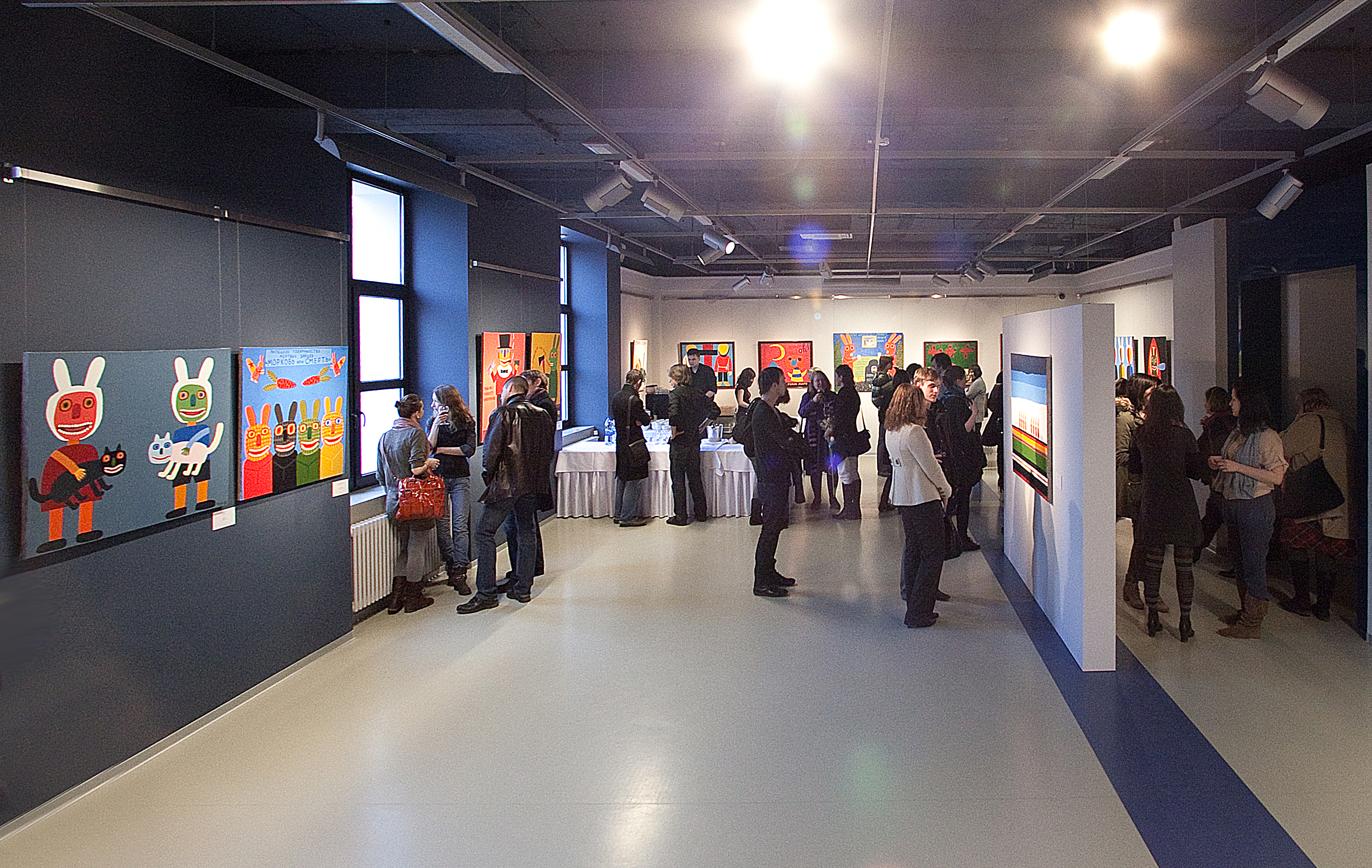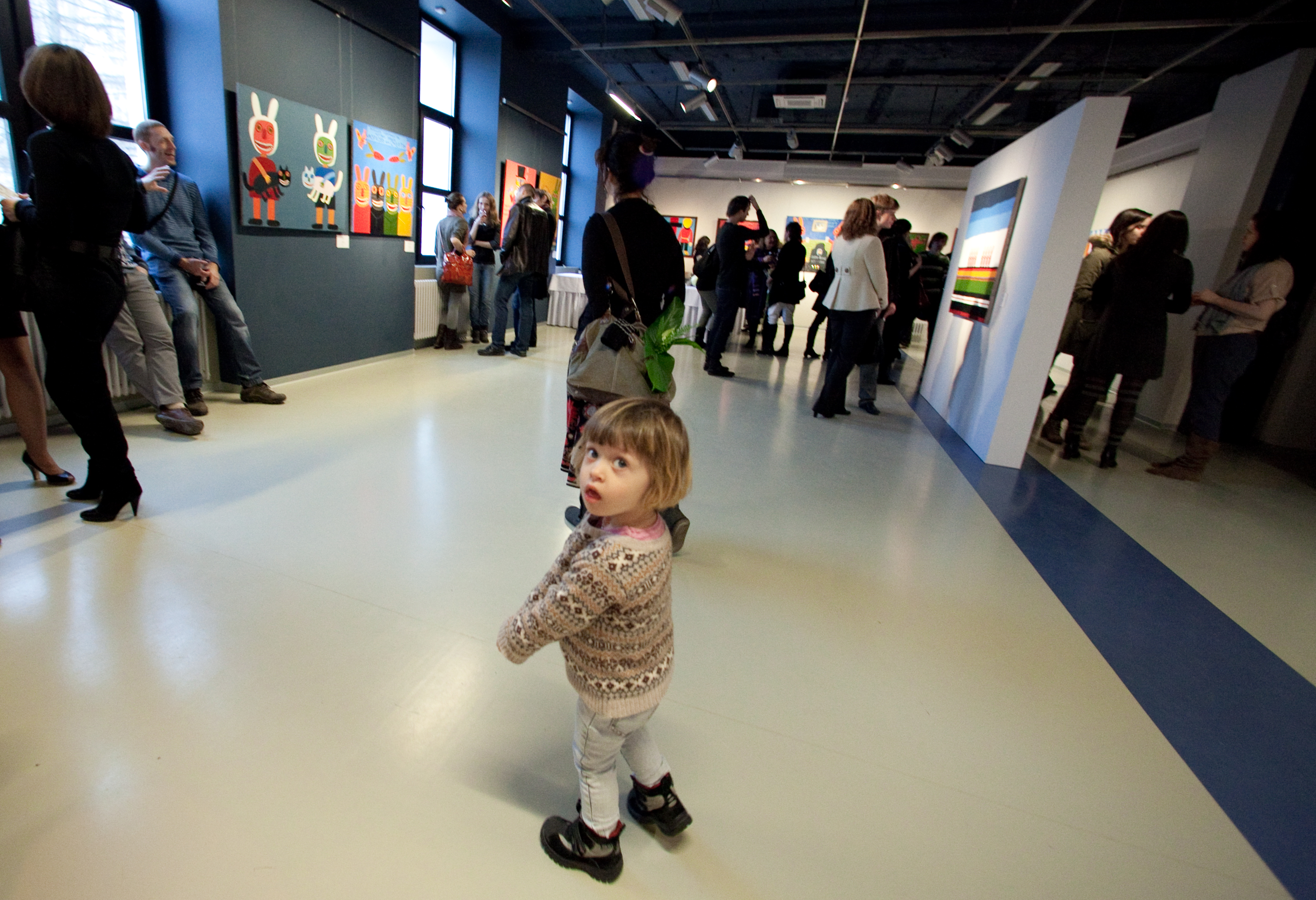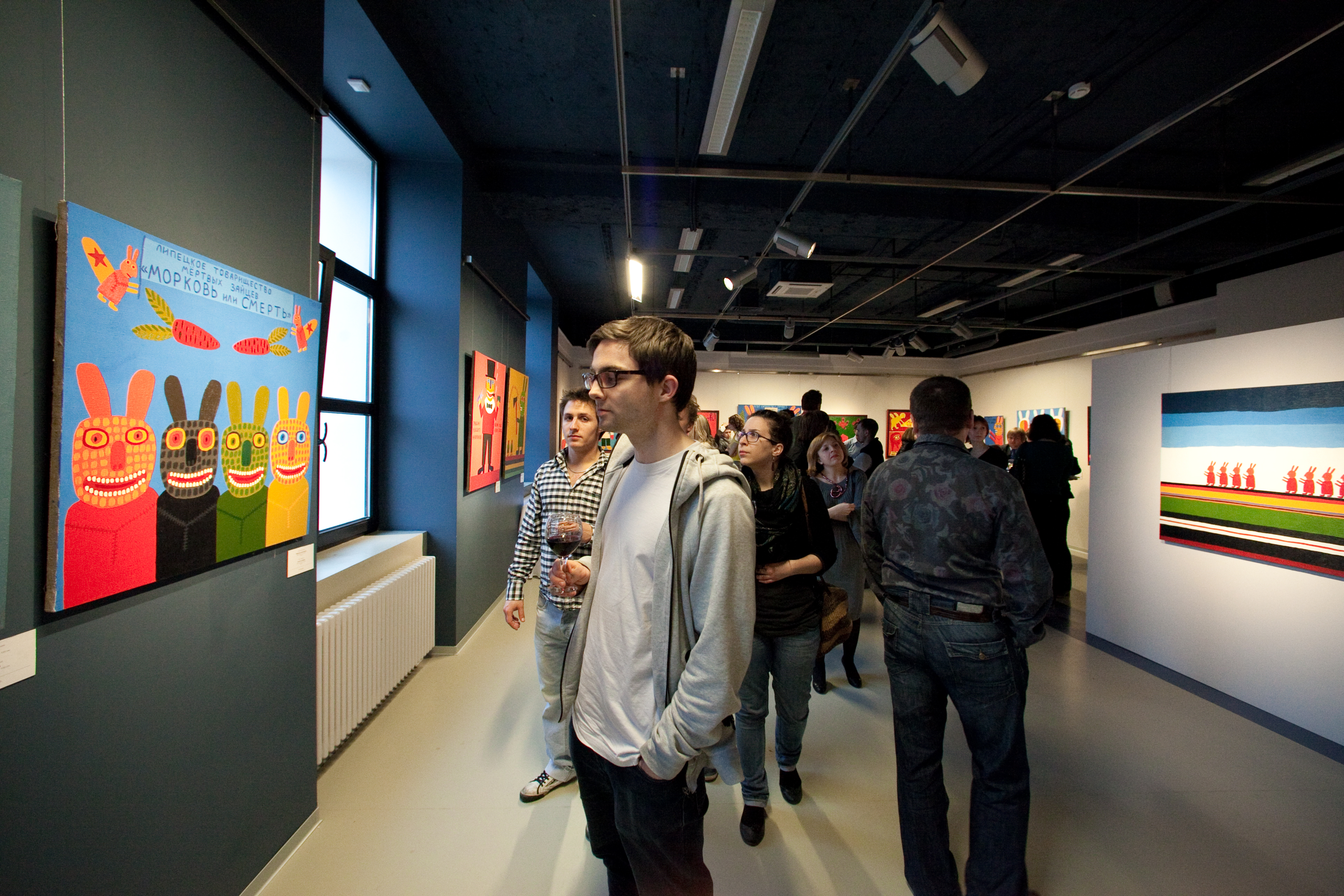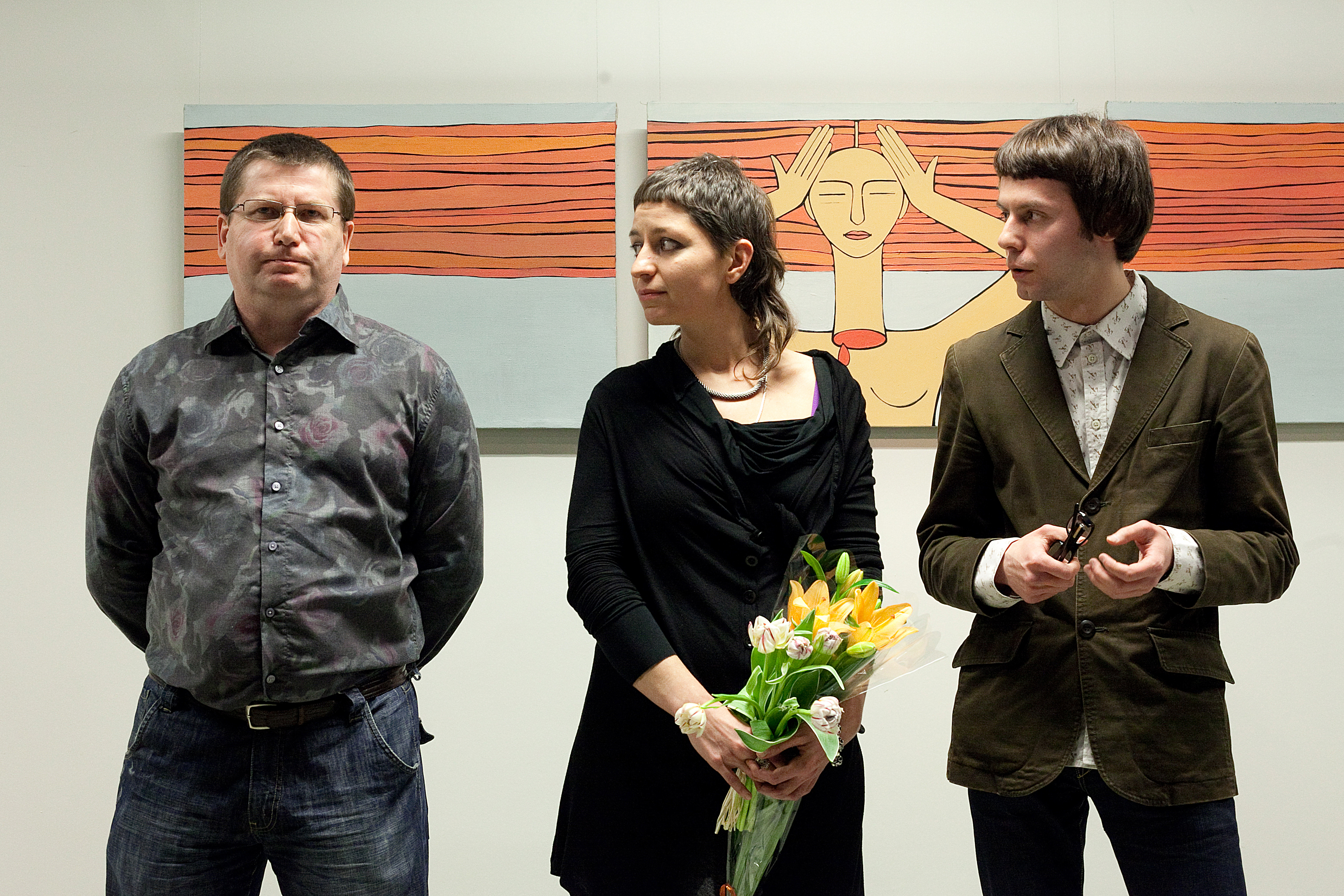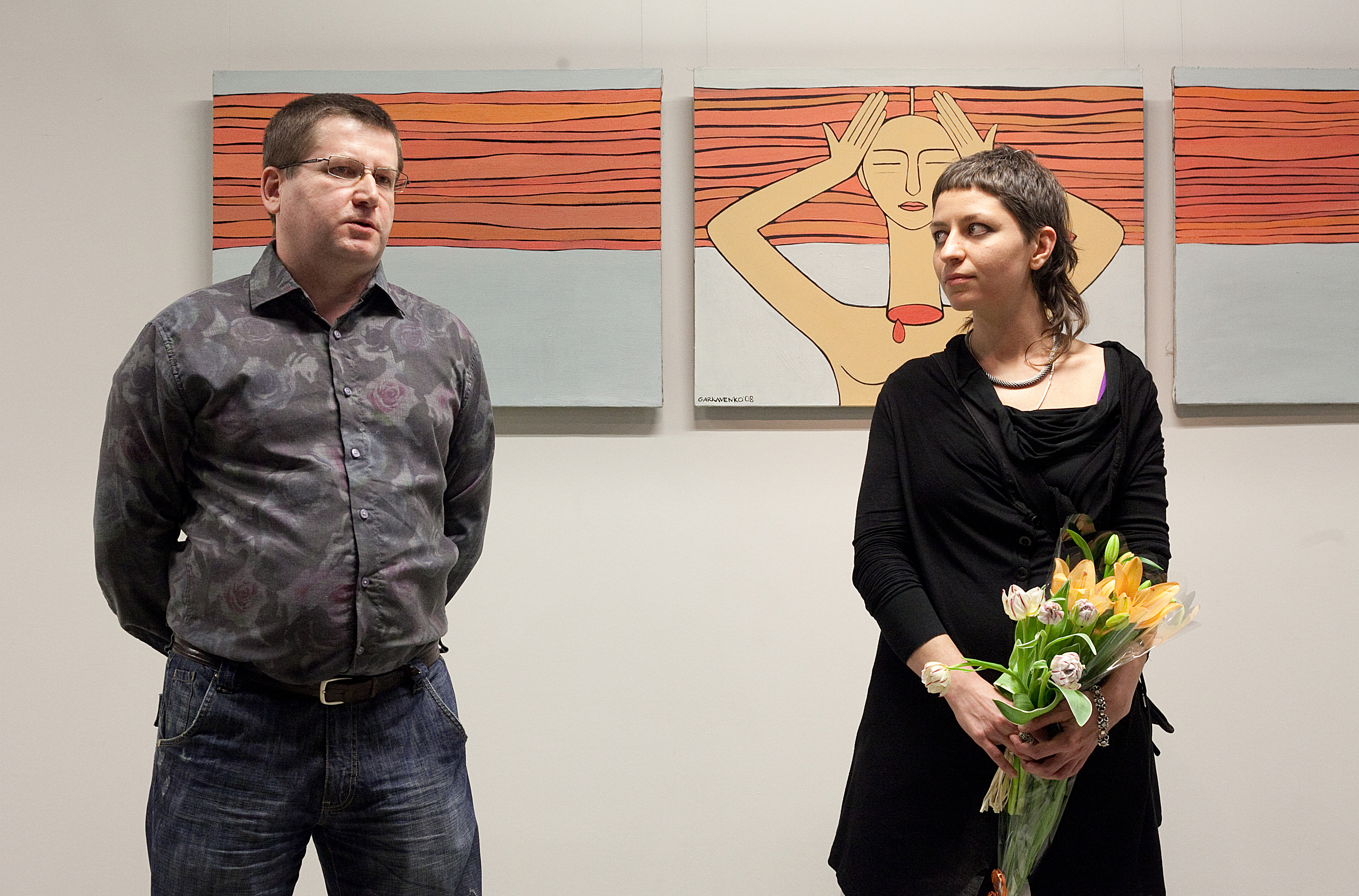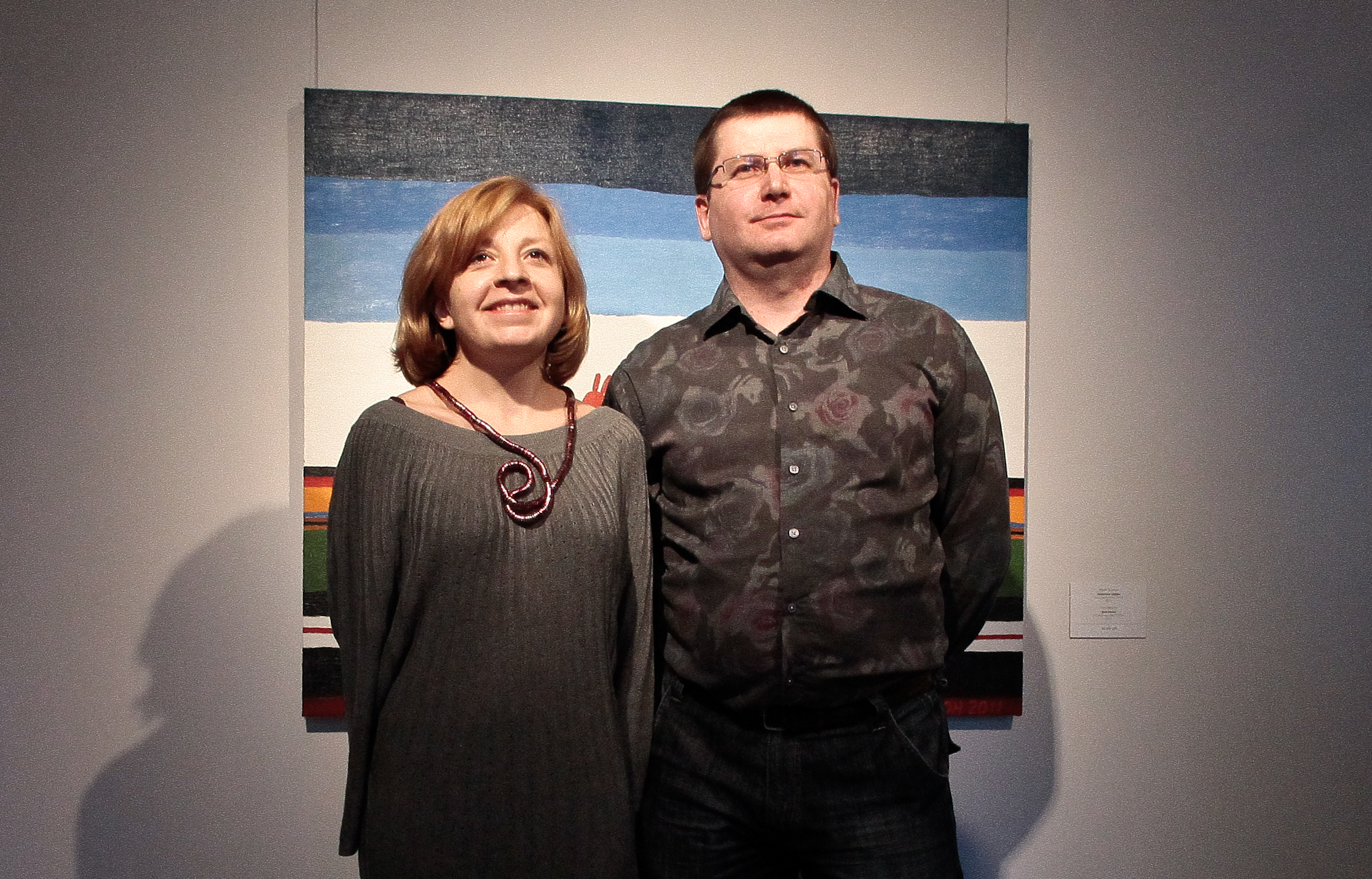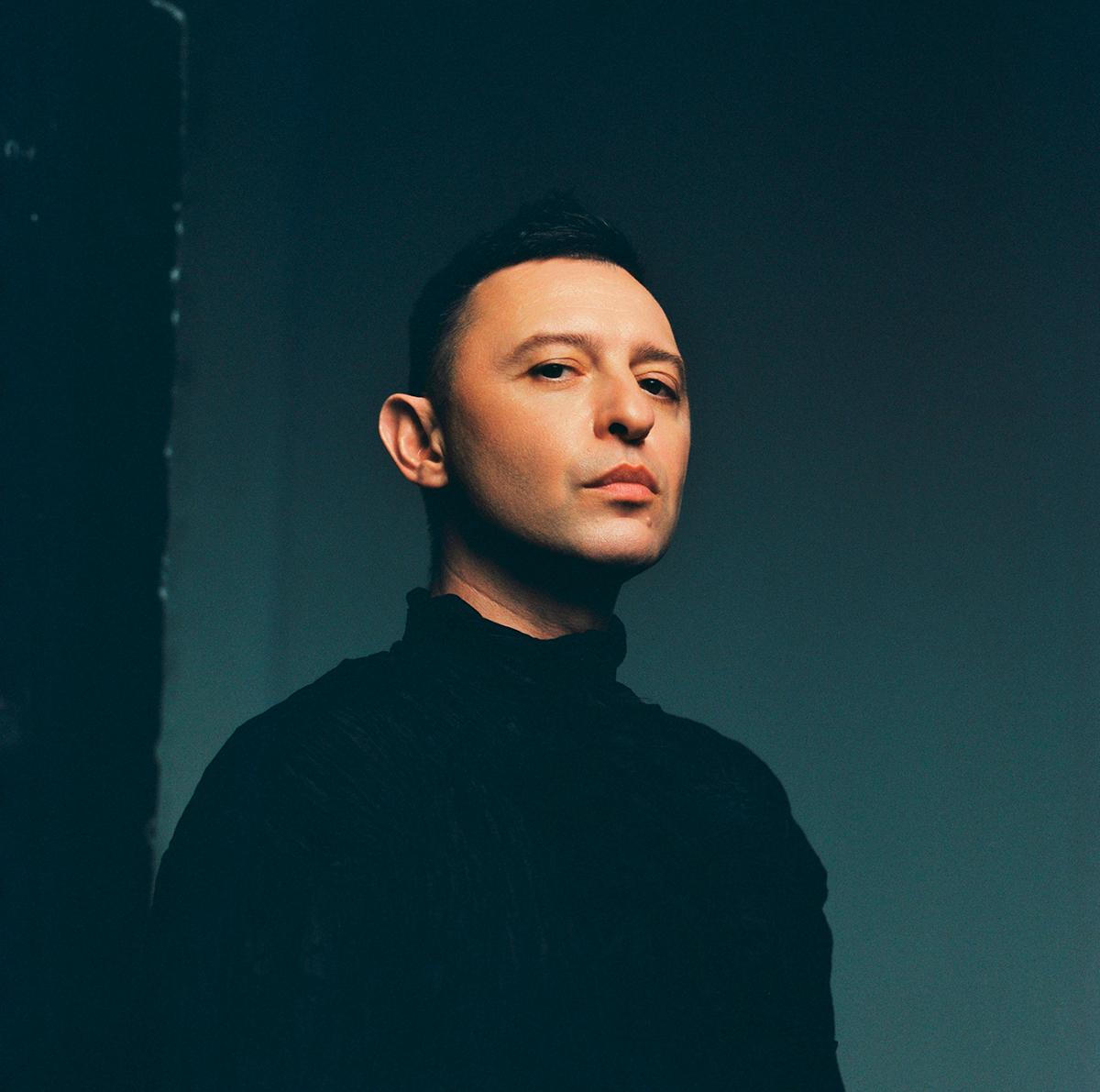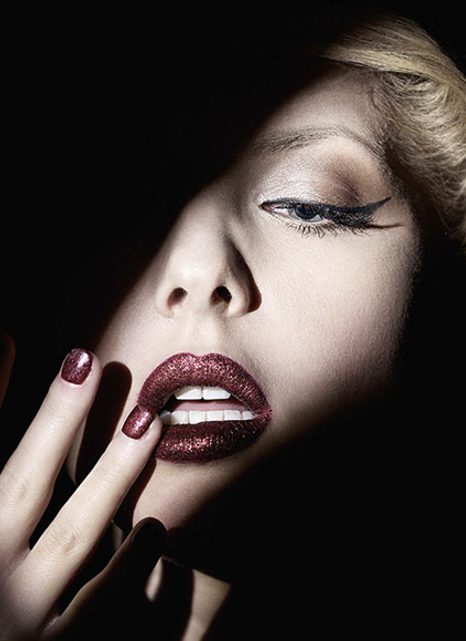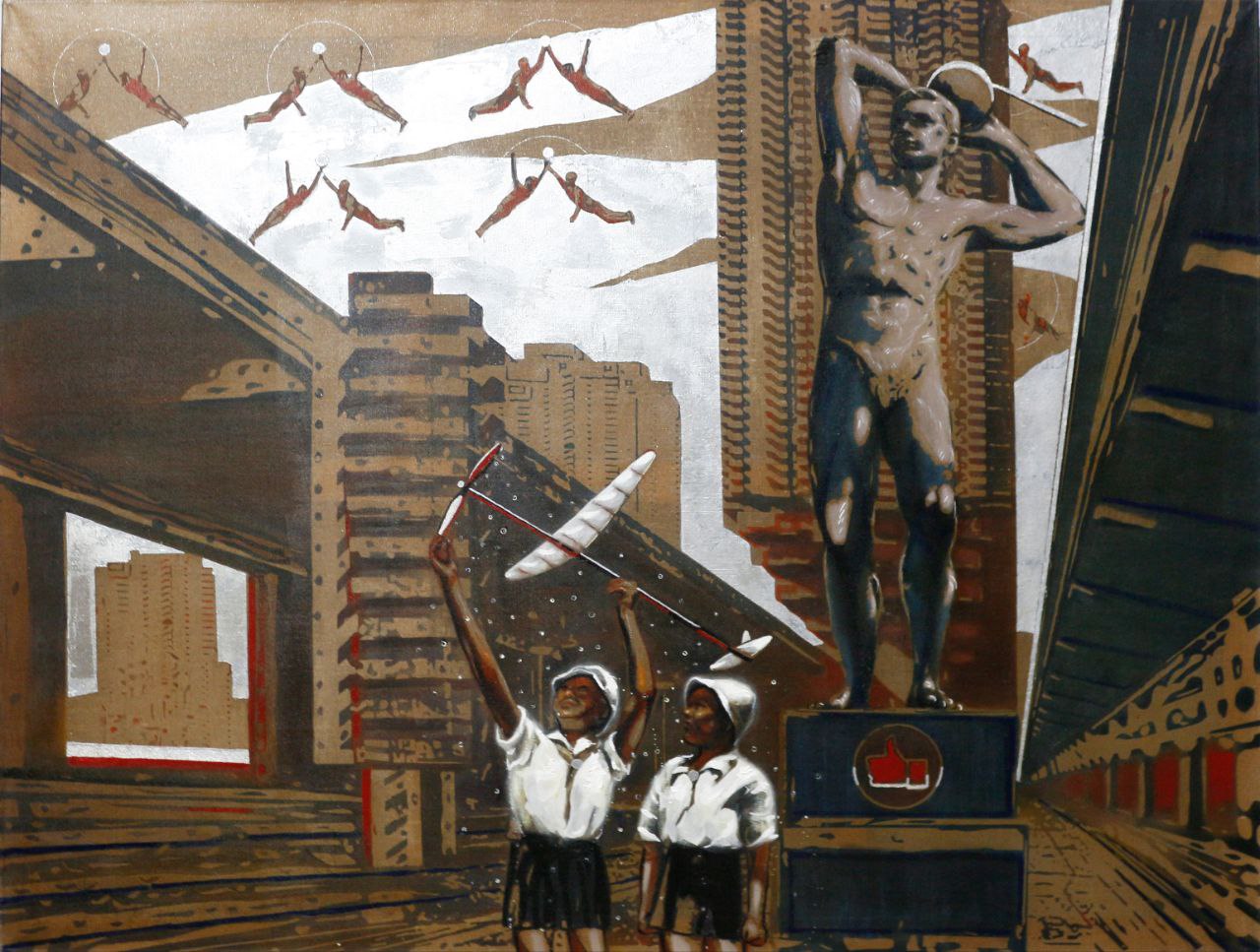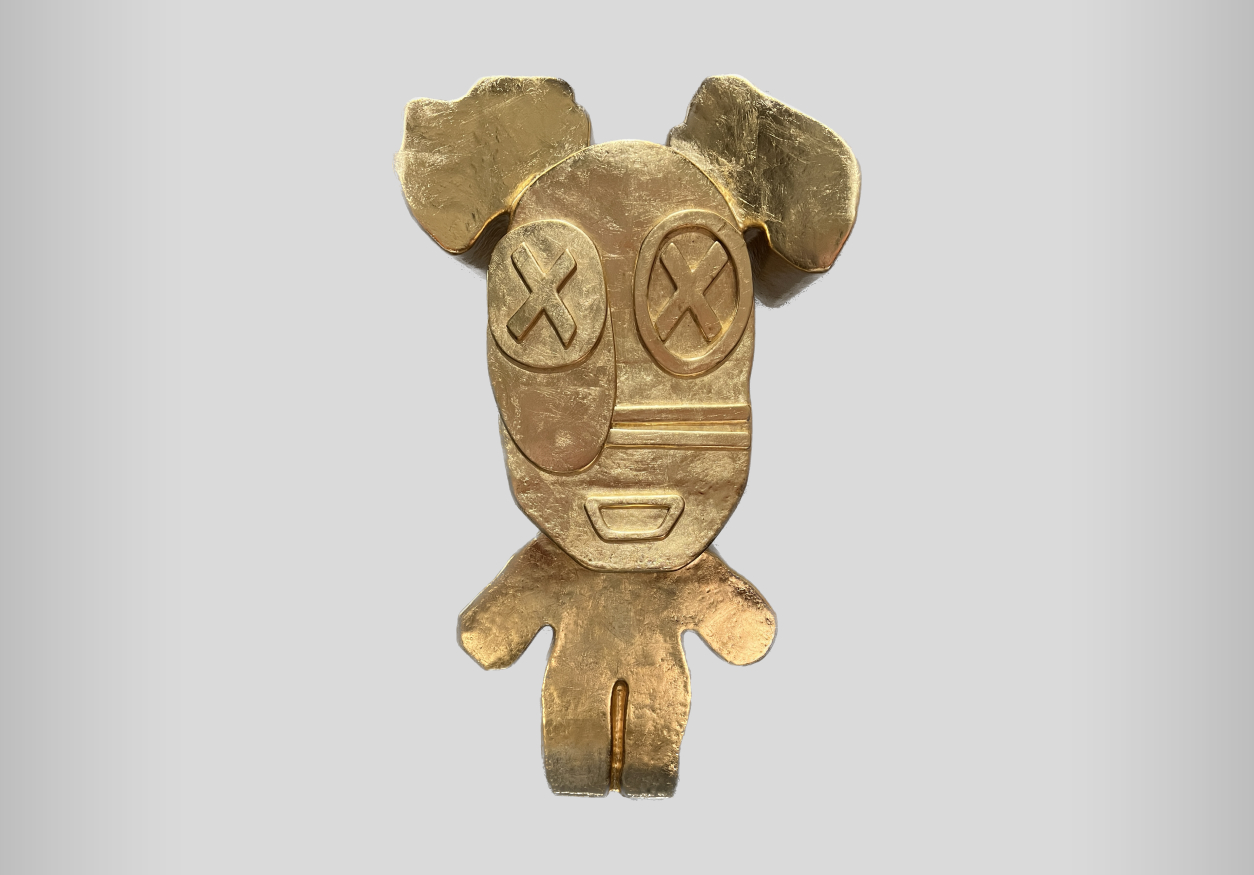Some call Tatianin the most relevant artist on the Russian scene today, often appearing on the evening news, while mornings are given over to his canvas
The popular mythology of Yury Tatianin — an improbable mixture of the high and the low — is such that the former seems incomprehensible and the latter marginalized. The artist's favorite heroes include Malevich, van Gogh, Joseph Beuys, and certain well-known television characters. He treats all his heroes equally, marking them, as it were, with large "equals" signs, stylizing all with equal bias: Everything from the hare to the crazy policeman's toothy, wide-mouthed grin; and from Josef always in a hat to Vincent without his sliced ear. And thus they enter into the mythology of the 20th Century.
One may compare Tatianin to Don Quixote, but his weapon in the fight against the inevitable is the Absurd. He straightforwardly brings artist and citizen together in the heavy black irony of the world around them. It is therefore difficult to evaluate Tatianin's works through the usual analytic prism of composition and color, inasmuch as his ideas and unique philosophy are always the dominant elements in them. The artist himself recognizes this difficulty, labeling his style "intuitive neo-primitivism", even though it is doubtful whether the mutable prefix can justly be appended to the immutable idea of the naïve. If you wished to cast Tatianin in a particular mold, then one might quickly call it naïve conceptualism. The artist, unique among all others, is both philosopher and man of letters who can describe his freshly minted work telephonically, not worrying about its painterly qualities.
As the list of his personal exhibitions has attained double digits, and the art dealers and mass media clearly love him, Tatianin relishes the opportunity to keep dishing up new stories about himself and others, such as the one about his presenting a red shirt to Hugo Chavez, or another about Joseph Beuys being billeted in Lipetsk before World War II.
The very title of the exhibition "The Dead Hare: All We Got" demonstrates how the tangled web of Tyunovsky regional tales may come together in a single myth. The artist, in common with philosopher-structuralists, demonstrates once and for all that myths bring together different times and cultures. In Apollon Grigoriev's hoary, oft-repeated household aphorism, "Pushkin — Our Everything", Aleksandr Sergeyevich's surname is cynically replaced by the Dead Hare. In turn, this beast plays a symbolic role in art of the 20th Century, becoming a kind of Everyman to whom the mythmaker Joseph Beuys tries to explain the meaning of art.
Yury Tatianin does everything he can to ensure that the audience doesn't confuse dead hares with living Beuysians, always drawing them with the distinctive Y-shaped scar on the chest that comes from the animal's dissection. The time is ripe for "unafraid" viewers to ask: "So what's that on the cute bunnies? " The author answers: It's a chain. Such is his "classical" attitude towards death: he laughs, not to be scared.
Tatianin, like most artists who don't live in the capital cities, evinces a hunger for culture and information. The artist expresses his need for connection to the global artistic process by transmitting the achievements of European art to a local audience; hence the inclusion of all its myths and heroes. The author hides himself behind their broad backs and our own sarcasm, a customary position of the classical artist, although already unusual in 20th Century art, where the artist feels entitled to vent on the viewer as one would on a psychoanalyst, all of it being very subjective. Tatianin himself, smiling slyly, says that his favorite picture is of... himself.

